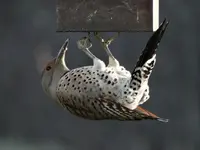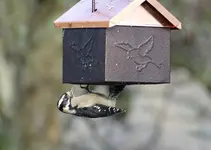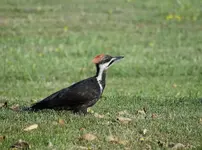Urging people to stop thinking of the yard as a place they have to mow grass. Instead thinking of your yard as part of nature and the web of life. Become a land steward.
"Many consider the late Aldo Leopold to be the father of modern conservation theory and practice. Leopold believed that land stewardship was not only rooted in conservation but also involved ethics, or the search for a higher meaning. He wrote that all ethics rest upon the single premise "...that the individual is a member of a community of interdependent parts. The land ethic simply enlarges the boundaries of the community to include soils, waters, plants, animals, or collectively: the land." This is to say that once we understand that humans are not separate from, but are part of and depend on the natural community, we will develop an ethic to care for the community as a whole.
Stewardship of your land is the greatest gift you can give to present and future generations. This chapter explains what healthy ecosystems are, and what you can do to help restore and maintain them for the future.
Focus on the Building Blocks
Natural resources refer to all the things that are naturally produced, and include water, air, soils, minerals, plants, and animals. The key to good land stewardship is to ensure that the basic building blocks for healthy ecosystems are taken care of. These basic building blocks are healthy soil, clean water and air, and biological diversity. Soil is the foundation of our plants, whether they are natural communities, tree farms, or food crops. Clean water and air are essential for all living organisms.
Biological diversity is simply the variety or diversity of living organisms. Over the last 500 years many organisms have become extinct or extirpated because of human activities, and many more are currently declining in population. Some of these species play a critical role in our ecosystems, and others offer medicinal, economic, nutritional, and aesthetic values. For most species we do not have enough knowledge to fully understand what roles they play in our ecosystems or what values they offer. As a good steward, though, making sure that the native plant and animal communities found in your area continue to live is a priority as important as maintaining healthy soils and clean water and air. This is especially true for rare species such as the Karner blue butterfly, which has a hard time recolonizing within other sites." ( Excerpt from the following site)
https://www.michigandnr.com/publica...de/Habitat_Mgmt/Planning/Land_Stewardship.htm
Backyard habitat
https://www.michigandnr.com/publica...uide/Habitat_Mgmt/Backyard/Backyard_Intro.htm



